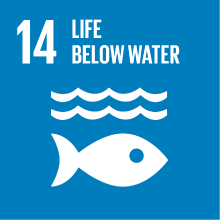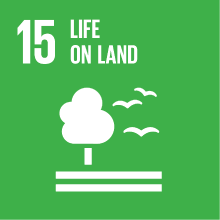ENVIRONMENTAL MODELLING
- Academic year
- 2023/2024 Syllabus of previous years
- Official course title
- ENVIRONMENTAL MODELLING
- Course code
- CM0533 (AF:397238 AR:213219)
- Teaching language
- English
- Modality
- On campus classes
- ECTS credits
- 6
- Degree level
- Master's Degree Programme (DM270)
- Academic Discipline
- BIO/07
- Period
- 1st Semester
- Course year
- 2
- Where
- VENEZIA
- Moodle
- Go to Moodle page
Contribution of the course to the overall degree programme goals
Expected learning outcomes
1) Knowledge and comprehension
Knowledge of the terminology and of the main concepts of dynamic system theory. In line with the learning objectives of the programme, this knowledge will enable students to characterize and model the temporal evolution of environmental and economic data, thus providing a back ground for science -based policy making and management actions.
Understanding the relevance of the systemic approach in the investigation of complex systems, in the description of their dynamics sing process-based models, in the forecasting of their likely evolution.
2) Capacity of applying knowledge and comprehension
To be able to apply dynamic system theory to develop a range of models for simulating, e.g. the evolution of exploited renewable resources, marine food web dynamics, impacts of pollutants on biogeochemical cycles ....
To be able to plan management actions, aimed at mitigating the impacts of local and global antropic pressures.
3) Assessment capacity
To be able of assessing the environmental benefits brought about by the implementation of alternative scenarios of management actions, such as wildlife restoking, reduction of the loads of pollutants and nutrients, limitation of fishing effort .
Pre-requirements
Contents
2) First order linear ODE. General solution of homogeneous linear ODE. Modelling the evolution of a pollutant in a waterbody. Non-homogeneous linear ODE as a result of a mass balance equation. Solution of the non-homogeneous equation at constant pollutant input. General solution of a non homogeneous linear ODE: the variation of constant method . Solution of a linear first order ODE for three typical cases of time dependent forcing functions: linear , periodic , exponential. Application to the modelling of a pollutant in a water body. Input-output relationships. Inverse problem and its relevance for the implementation of the environmental legislation. Linear combination of forcings. The superposition principle and its application to the pollutant model. Exercises on linear ODE. Examples of application of ODE. Individual based growth models: the Von Bertallanfy equation.
3) 1D Dynamic systems State variables. Definition of a dynamic system. 1D autonomous systems. Direction field and phase portrait of autonomous equation. Orbits and trajectories. Phase portraits: the logistic equation. Stationary (equilibrium) points and their stability. Local stability analysis. Renewable resources. Open access resources. Management policies: quotas and effort control. Controlling quotas: pros and cons discussed using the logistic model with constant harvest. Controlling effort: pros and cons discussed using the logistic model with harvest proportional to the stock. Examples from fishery.
4) 2D linear dynamic systems Systems of ODE: the Streeter-Phelps model for simulating the dynamic of Dissolved Oxygen in a waterbody. 2D dynamic systems: state vector and state space. Autonomous 2D systems. Vector field. Existence and uniqueness Theorem in 2D. 2D linear systems. Particular solutions of 2D Linear dynamic system. General solution. Properties of the general solution. Trajectories and orbits for real eigenvalues. Numerical examples. Numerical solution of dynamic systems using ExCel and "R" programming environment.Constructing phase portraits using numerical solutions. Numerical exercises. Classification of orbits of 2D systems: typical phase portraits for complex eigenvalues. Periodic orbits. Summing up: classification of orbits of linear systems. Applications of 2D linear systems: the Streeter-Phelps model. Multimedia environmental models for fate and transport of organic micropollutants. Organic micropollutant bioaccumulation models.
5) 2D non-linear dynamic systems. Interactions among population in ecosystems. Predator-prey interactions. The Lotka-Volterra model. Stability of an equilibrium point. Stability analysis of 2D linear systems. Local stability analysis of non-linear systems. Stability analysis of the Lotka-Volterra model. More complex dynamics: predator functional response Holling I,and II. Emerging of periodical oscillation in predator-prey systems.
6) Guidelines for model building. Steps in model building: identification of model structure, a priori parameter estimation, calibration, validation, assessment of model performance: Goodness of Fit (GoF) indices and graphical methods.
Referral texts
Assessment methods
Type of exam
Teaching methods
2) Correction of homework.
3) Use of software tools for the numerical solution of dynamic systems: these tools allow students to check the analytical solutions and to explore the system dynamics in real world situation, in which the forcings are estimated from time series of observations.
2030 Agenda for Sustainable Development Goals
This subject deals with topics related to the macro-area "Natural capital and environmental quality" and contributes to the achievement of one or more goals of U. N. Agenda for Sustainable Development



